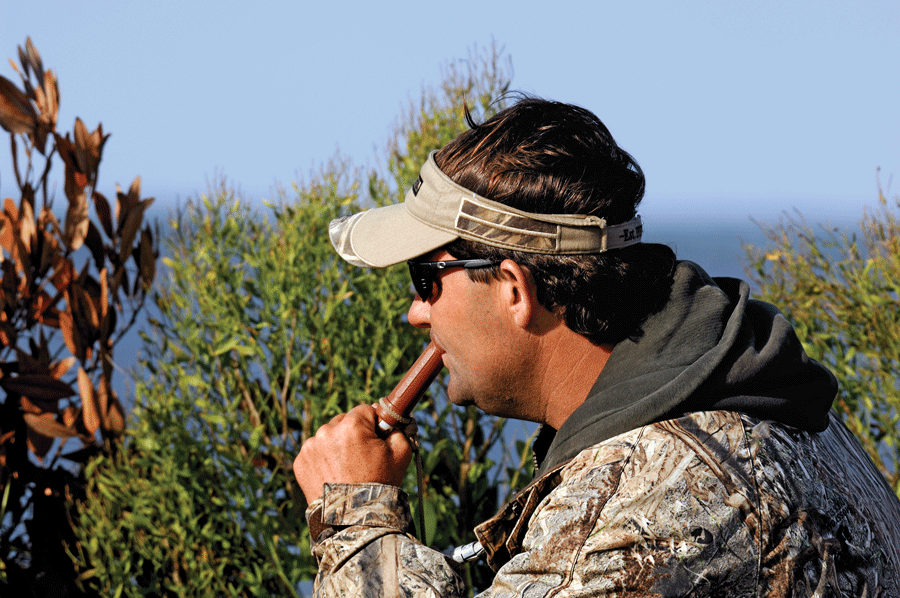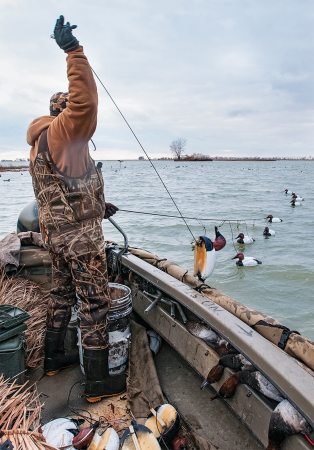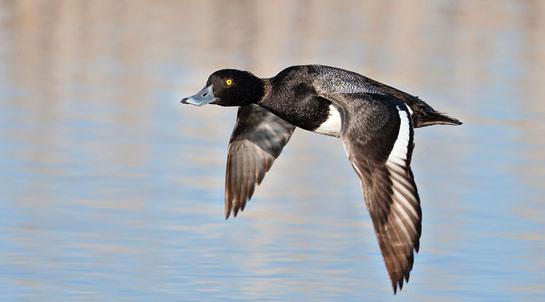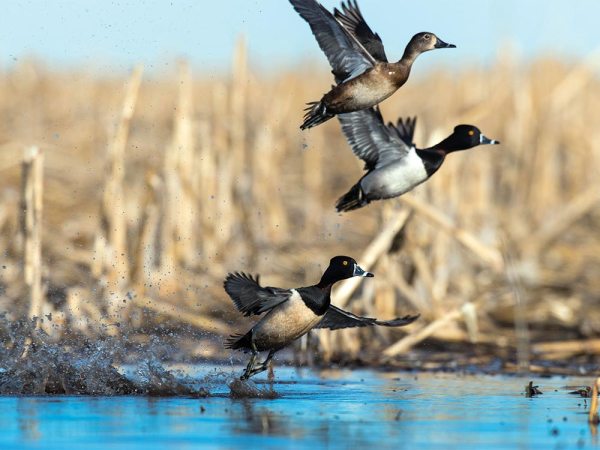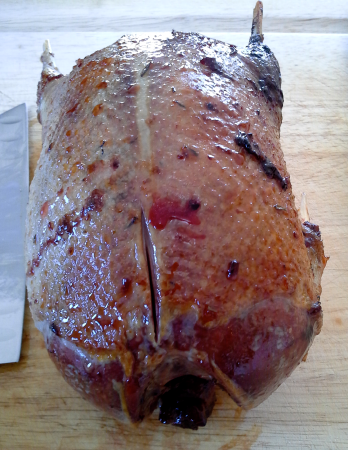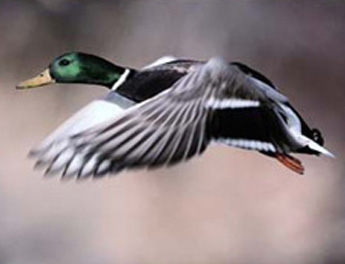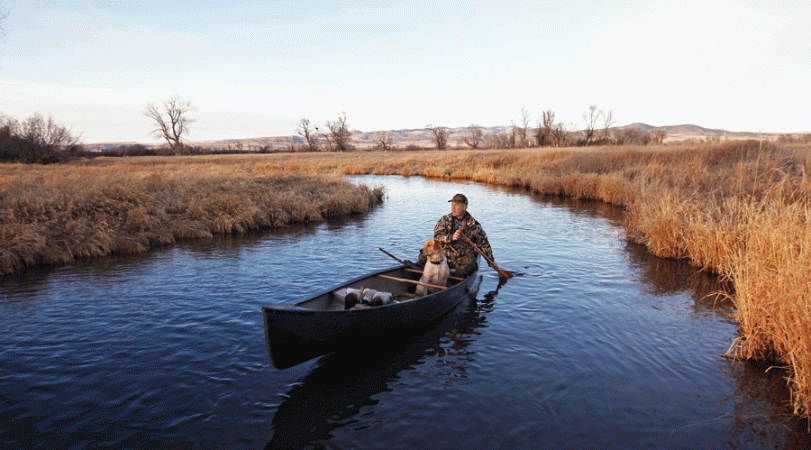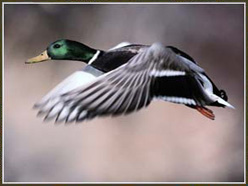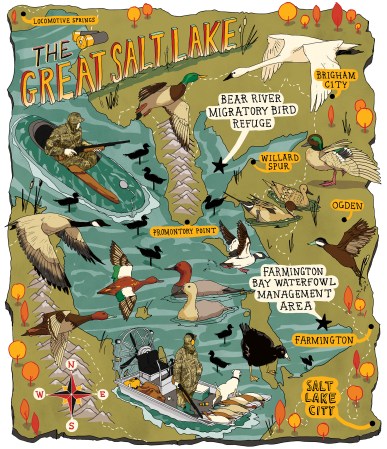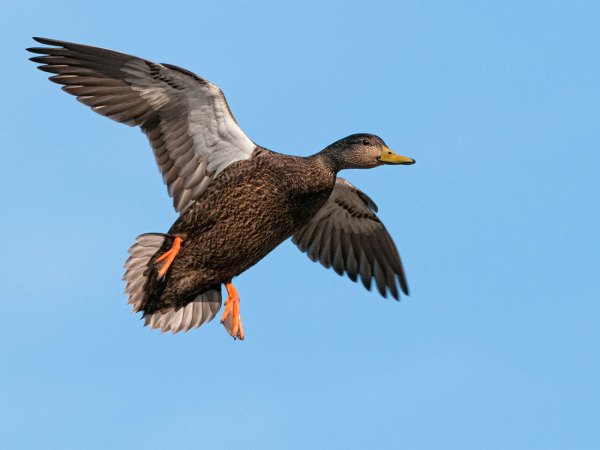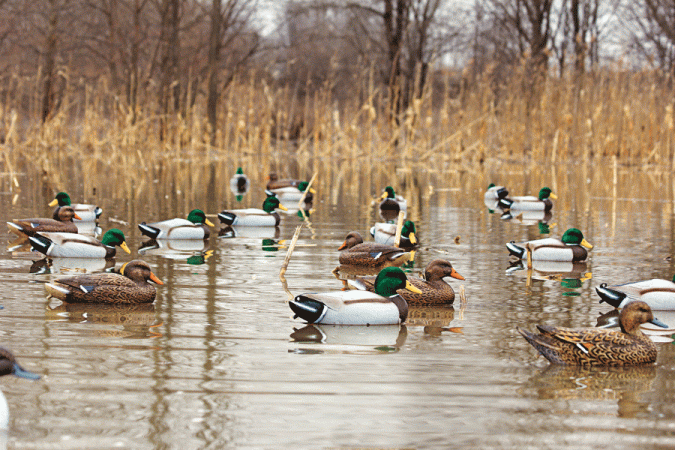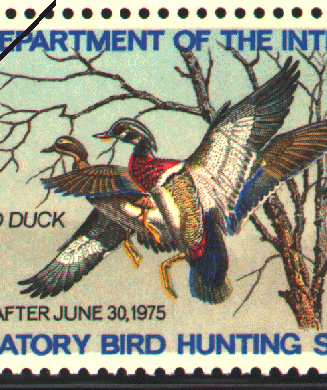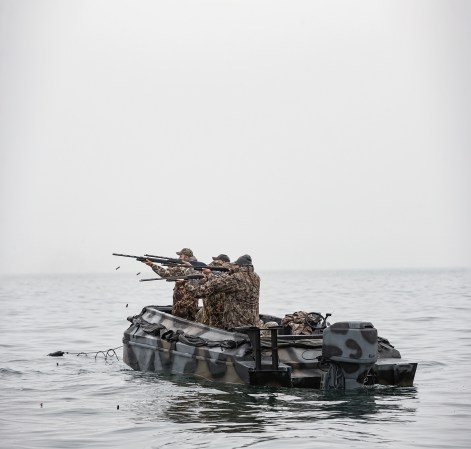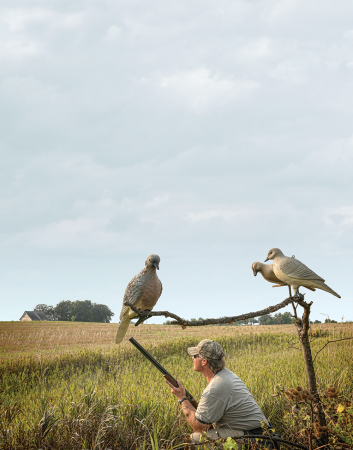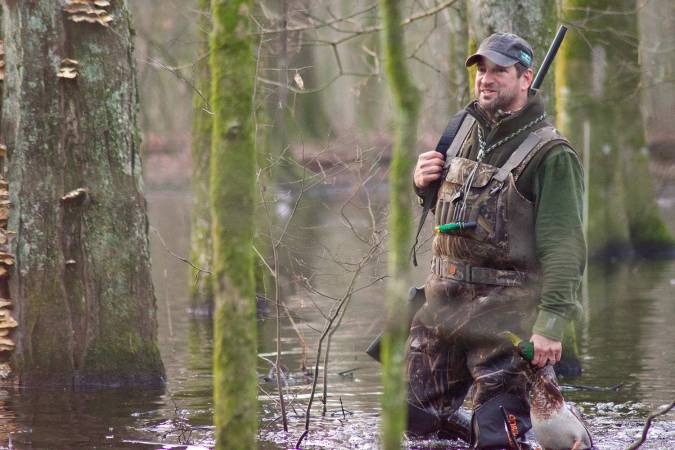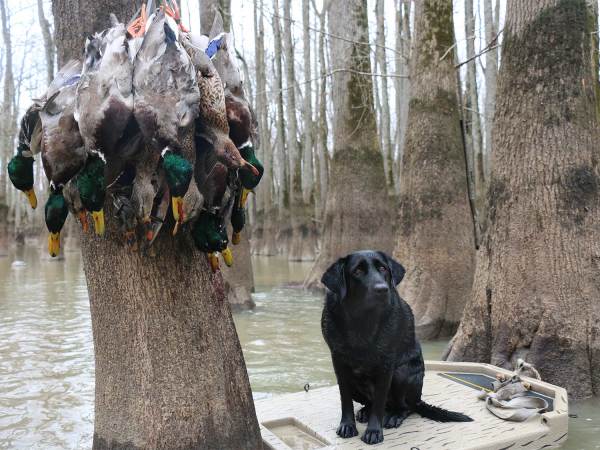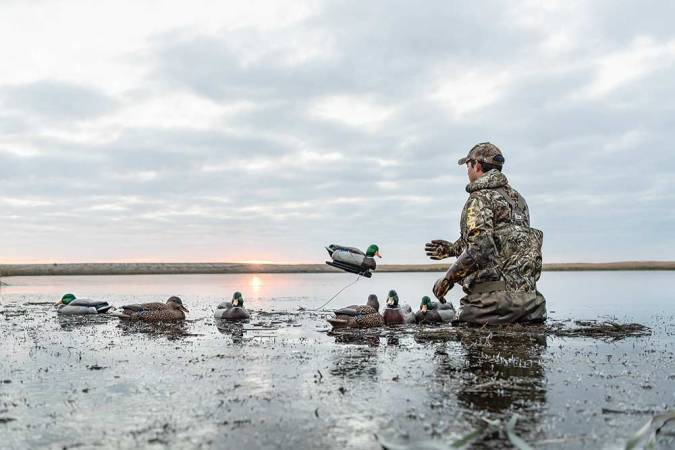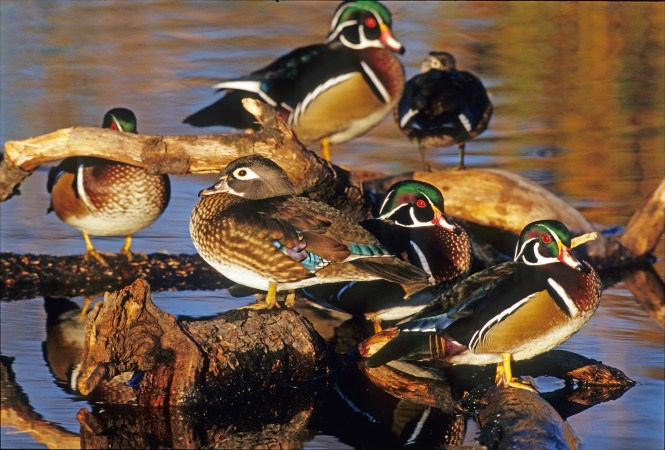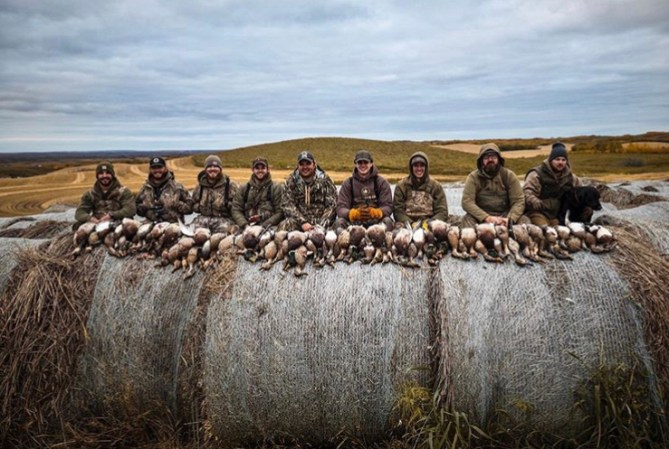Diving ducks aren’t as vocal as puddlers, but calling can still help coax in cans, ‘bills, ringers, and redheads.
An incoming flock of dabbling ducks, all quacky and chattery as they set their wings, makes my heart skip at least three beats. But a squadron of divers, with their pinions whooshing through the chill air, makes the old ticker stop outright.
The only thing missing with the divers are calls, right? Not necessarily. Diving ducks call, too, just not as loudly or as much as their puddle-bound cousins. Put more divers in the boat by understanding the calls they Make, learning key strategies, and knowing which tools to employ.
Diver Sounds
While the diving clan’s “big four” are closely related within the duck genus Aythya, the birds vocalizations exhibit variation.
Canvasbacks:
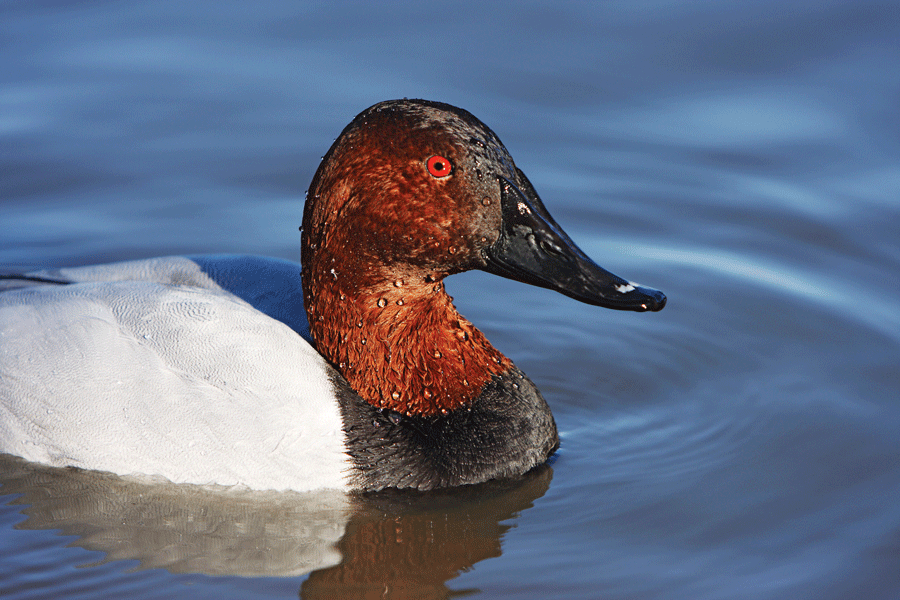
“Hen canvasbacks make real raspy and short kwak notes when they’re on the water,” says Capt. Todd Lensing of Flyway Fowling Guide Service (flywayfowling.com). Lensing hunts the Mississippi River’s Pool 9 in southwestern Wisconsin, where upwards of 70 percent of the continental canvasback population passes through on their autumn migration. These kwak notes can attract juveniles still circling and, later in the season, mature bulls.
Redheads:
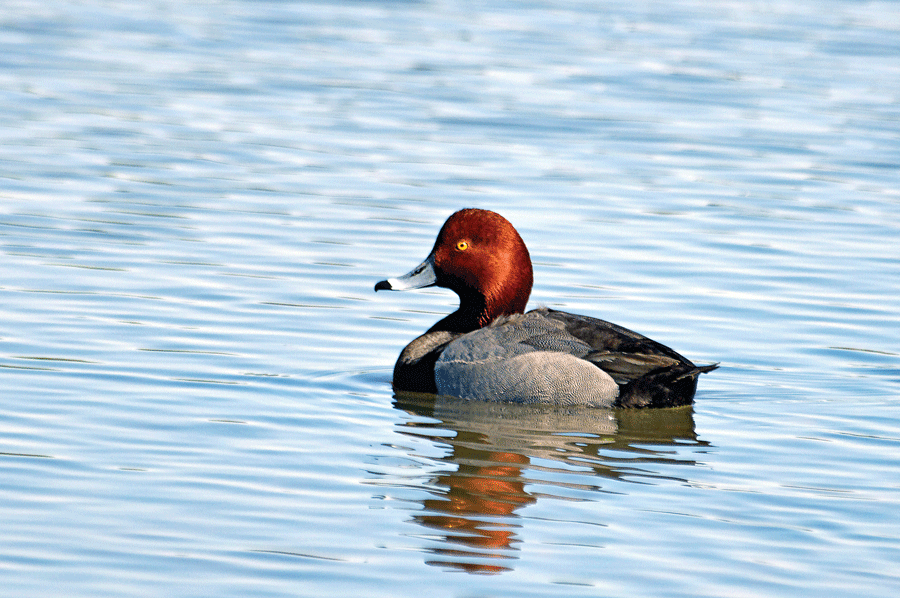
“You’ll hear redheads make a chattering brrrrrr call,” says Lensing. “They’ll make that sound in the air as a spacing call.” Redheads will also grumble on the water.
Bluebills (left) and Ringbills (right):

Scaup sound a lot like redheads. “Bluebills will make that brrrrrr in the air too,” says the guide. The sound is often described as a grumble or chuckle as well. Scaup sometimes make short barks on the water.
“Ring-necked ducks can be very vocal,” William Villebrun of Nett Lake, Minnesota, told me when we hunted his home waters, where hundreds of thousands of ringbills annually stop over during their migration to feast on wild rice. “They croak and grunt on the water, and may make low-ball chattering talk while flying.”
Calling Strategies
“A good setup and location near a food source, along with smart decoy selection and placement, are the basis of effective diver hunting,” says Lensing, though he won’t hesitate to use a call when needed. “My go-to call is actually a mallard call,” he says with a laugh. “When a circling flock of divers decides to boogie, I will make a real racket to try and get their attention and turn them. The sound I make is a real fast, choppy, and high-pitched comeback call. It works often enough that it’s worth the effort.”
While Lensing endorses location and setup as the keys to successful diver hunting, he says calling has its place, especially when the ducks are closing in and can hear the brrrrrrs divers make in the air, as well as the guttural grunts, growls, grumbles, chuckles, and low barks the birds make on the water.
Diver Calls
Other than the mallard call that’s already on your lanyard, there are a number of very effective diver-specific calls available. These five calls tend to dominate the market: DJ Calls’ classic K-11 Diver, which features an adjustable tube in the barrel to match the tone of canvasbacks, redheads, and bluebills; the Mick Lacy Diver Duck Call; Flextone’s Hunter Series Diver Duck Call; Haydel’s DC-14 Diver Call; and Faulk’s DD-7 Diving Duck Call.
In the end, it’s the low-pitched and rolling growls, brrrrrrs, and grumbles that matter the most when you’re working divers that are closing in. One key calling skill is being able to flutter or roll your tongue, to better create those throaty diver sounds.
